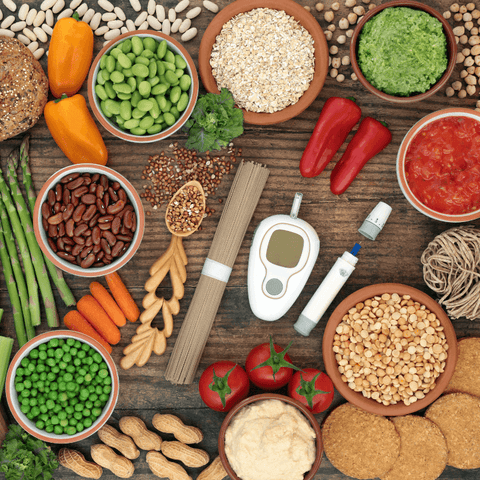Preserving muscle mass during a weight loss diet is essential to achieving a healthy and lasting body transformation. While many focus solely on weight loss, neglecting muscle mass can have negative effects on your long-term health and metabolism.
Muscle mass and metabolism
Muscle mass plays a fundamental role in human metabolism, has a direct influence on energy balance, basal metabolic rate, TEF (thermogenic effect of food) and calorie consumption during physical activity. Preserving muscle mass during a weight loss diet can not only improve the efficiency of the weight loss process, but also promote better long-term weight management. In fact, muscle mass, being metabolically active, helps to preserve a high basal metabolic rate and a higher overall caloric consumption , thus facilitating weight management and the reduction of body fat. This is why it is so important, when you want to lose weight, to choose a diet that does not make you lose muscle but fat.

Calculate calorie needs and establish a moderate deficit
Establishing your calorie needs and how many calories to reduce them to lose weight effectively but at the same time sustainable and without losing muscle is essential.
1) Calculation of the basal calorie requirement: The first step in determining the calorie requirement is to calculate the basal metabolic rate (BMR), which is the amount of energy required to maintain the vital functions of the body at rest. There are several formulas, such as the Harris-Benedict equation, that take into account factors such as age, gender, weight, and height to estimate your BMB. This value provides an estimate of the minimum calorie consumption to support vital functions without any additional physical activity.
2) Consideration of physical activity: Once the MB has been determined, it is important to consider the daily physical activity to obtain the total calorie requirement. Multiplying the MB by a factor representing your level of physical activity (sedentary, light, moderate, vigorous) provides a rough estimate of the calories needed to sustain physical activity.
3) Definition of a moderate deficit: To promote healthy weight loss and preserve muscle mass, it is advisable to create a moderate calorie deficit. A moderate deficit is generally considered to be around 10-20% of total calories needed to maintain current weight. This deficit allows for gradual and sustainable weight loss without putting muscle mass at risk.
4) Monitoring and Adjusting Your Calorie Deficit: It is important to remember that every individual is unique, and caloric needs may vary. It is advisable to closely monitor your progress and adjust your calorie deficit based on your body's response. Too high a deficit can compromise muscle mass, while too low a deficit can slow down weight loss. The goal is to find a personalized balance to promote steady weight loss and preserve muscle mass.
5) Gradual and sustainable approach: Gradually reducing calories and establishing a moderate deficit allows the body to adjust to weight loss in a more balanced way.
This sustainable approach reduces the risk of losing muscle mass and promotes a more harmonious and lasting body transformation.
Exercise planning for weight loss
Exercise is an essential component of weight loss and the preservation of muscle mass during a weight loss diet.
1) Combine cardiovascular training and resistance training: To maximize weight loss and preserve muscle mass, it is important to combine both cardiovascular training and resistance training. Cardiovascular exercise, such as running, cycling or swimming, helps burn excess calories and fat. Resistance training, on the other hand, stimulates muscle protein synthesis, preserving and enhancing muscle mass during weight loss.
2) Focused Resistance Training: To maintain and build muscle mass, resistance training should be focused on multi-joint and compound exercises, such as squats, bench presses, and deadlifts. These exercises engage multiple muscle groups simultaneously, stimulating a larger anabolic response in the body.
3) Gradual Progression of Intensity: To achieve lasting results and minimize the risk of injury, it is important to adopt a gradual progression in training intensity. Gradually increasing the weight, repetitions or sets of resistance exercises allows the muscles to gradually adapt, stimulating muscle growth and strength.
4) Focus on Muscle Hypertrophy: While dieting for weight loss, it is advisable to focus on weight training that targets muscle hypertrophy. This type of workout requires the use of moderate weights with 8 to 12 repetitions per set. The goal is to stimulate muscle protein synthesis and preserve muscle mass during weight loss.
5) High Intensity Training: High intensity training, such as circuit training or interval training, can be a great strategy for burning calories, improving metabolism and preserving muscle mass. This type of training by alternating resistance exercises with high intensity cardiovascular exercises can stimulate both metabolism and muscle growth.
6) Adequate Recovery: While on a weight loss diet, it is important to ensure adequate recovery between training sessions. Rest and recovery allow muscles to regenerate and grow. Make sure you get quality sleep, eat a proper diet, and include active rest days in your training schedule.
Balanced diet and adequate protein intake
Adequate protein intake is essential for muscle protein synthesis, which is a key process for maintaining and enhancing muscle mass during a weight loss diet.
1) Importance of protein intake for muscle protein synthesis: Proteins are made up of amino acids, the fundamental building blocks for muscle protein synthesis. During an exercise and weight loss program, protein intake plays a crucial role in maintaining muscle mass. Providing the body with an adequate amount of protein ensures that there is a positive protein balance, aiding in the building and repair of muscle tissue.
2) Recommended amount of protein: The amount of protein you need varies depending on many factors, such as age, gender, body weight, level of physical activity and specific goals. However, a general guideline suggests a daily protein intake of between 0.8 and 2 grams per kilogram of body weight. During a weight loss diet , it may be beneficial to slightly increase your protein intake to compensate for the potential increase in muscle catabolism .
3) High-quality protein sources : It is important to choose high-quality protein sources that provide all the essential amino acids needed for muscle protein synthesis.
Some high-quality protein sources include:
Lean meat: chicken, turkey, lean beef, lean pork.
Fish: salmon, tuna, trout, mackerel. Eggs: Whole eggs are a complete source of protein.
Dairy products: milk, Greek yogurt, low-fat cheese.
Legumes: lentils, beans, chickpeas.
Soy: tofu, tempeh, edamame.
4) Protein distribution throughout the day: To maximize muscle protein synthesis, it is advisable to distribute your protein intake evenly throughout the day. Eating portions of protein with each main meal and including a protein snack between meals can promote a constant supply of amino acids to the muscles, thereby optimizing protein synthesis.
5) Protein Supplements: Protein supplements can be helpful in achieving a desired protein intake, especially for those who find it difficult to meet requirements through diet alone. Protein powders, such as whey, casein or plant protein, can be consumed as a protein drink or added to shakes and recipes to boost your protein intake.
6) Role of nutrient-rich foods in the preservation of muscle mass: In addition to protein, nutrient-dense foods play a crucial role in maintaining muscle mass. Vitamins, minerals, antioxidants and healthy fats are essential for supporting metabolic efficiency and promoting muscle health. Including foods such as fruits, vegetables, whole grains, nuts, seeds, olive oil and fatty fish in your diet provides a wide range of nutrients that support muscle function, reduce inflammation and promote tissue repair.
7) Importance of Hydration: Proper hydration is often overlooked but critical to muscle health. Water is involved in many physiological processes, including muscle protein synthesis, nutrient transport and toxin removal. Drinking enough during the day and especially during physical activity helps maintain an optimal water balance to promote muscle well-being.
Summary of the main strategies for losing weight while preserving muscle mass
1) Adequate Nutrition: A balanced, balanced diet that provides optimal protein intake, along with complex carbohydrates, healthy fats, essential vitamins and minerals, is essential for sustaining muscle mass during weight loss. Make sure you are following a low-calorie but nutritious diet that provides all the nutrients needed for overall and muscle health.
2) Regular Exercise: Resistance training targeting muscle hypertrophy is essential for maintaining and enhancing muscle mass. Incorporating resistance exercise, such as weight lifting, free weight workouts, or using specific machines, helps stimulate muscle protein synthesis. Combining resistance training with cardiovascular exercise helps burn excess calories and maintain a negative energy balance for weight loss. Gradual Progression of Intensity: It is important to follow an exercise program that provides for a gradual progression of intensity. Start with light weights and gradually increase the weight, number of repetitions or intensity of the workout over time. This will progressively stimulate the muscles and promote the growth and preservation of muscle mass.
3) Adequate rest and recovery: Rest and recovery are key to maintaining muscle mass. During sleep and rest days, muscles repair and regenerate. Make sure you get an adequate night's rest and incorporate active rest days into your training schedule to allow your muscles to recover and adapt to the stimuli of exercise.
4) Balanced, sustainable and personalized approach: To achieve lasting results, it is important to adopt a balanced, sustainable and personalized approach to weight loss and muscle mass preservation. Each individual is unique and has different needs and goals. Working with a doctor or nutritionist can help develop a personalized plan that takes into account your specific needs.



